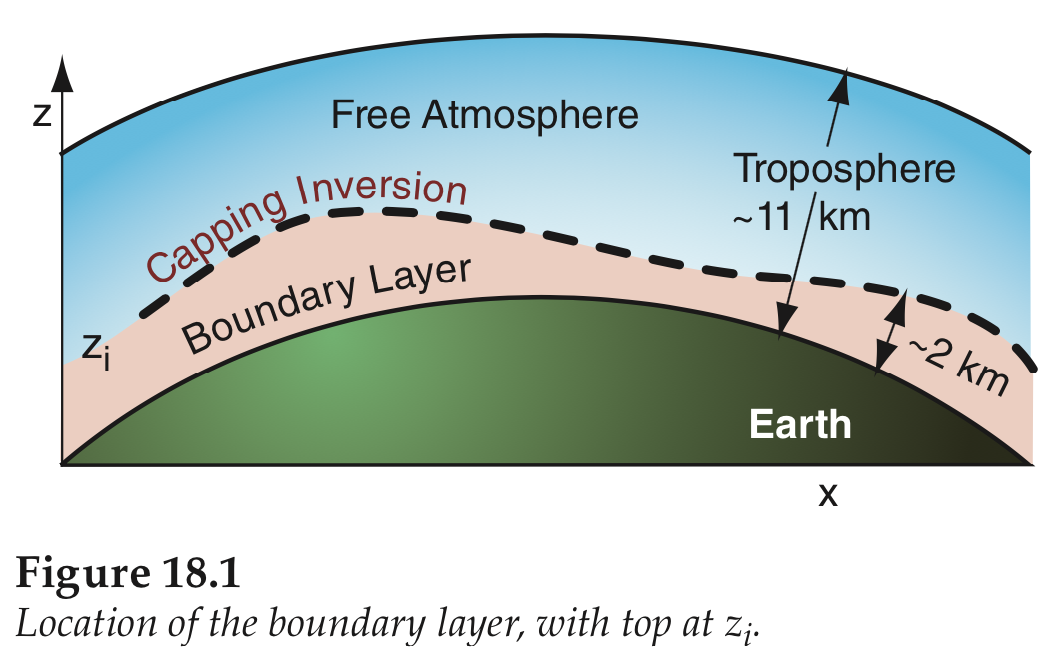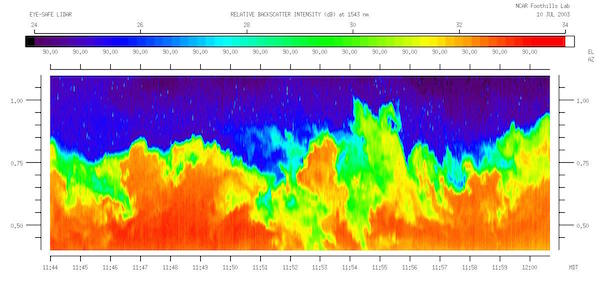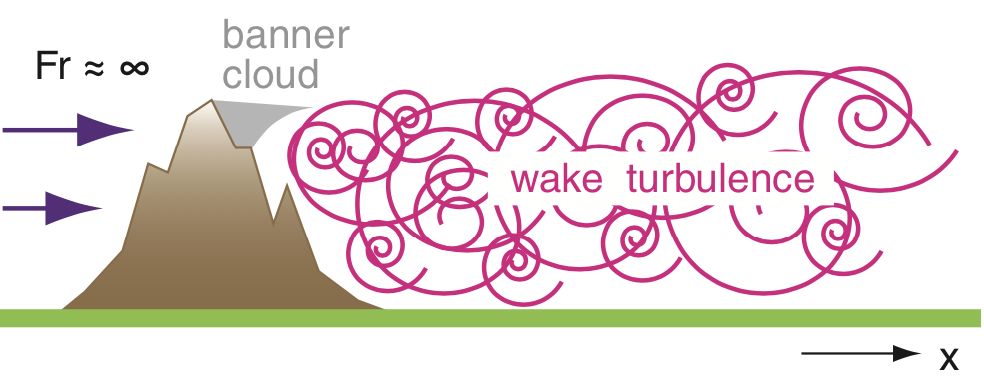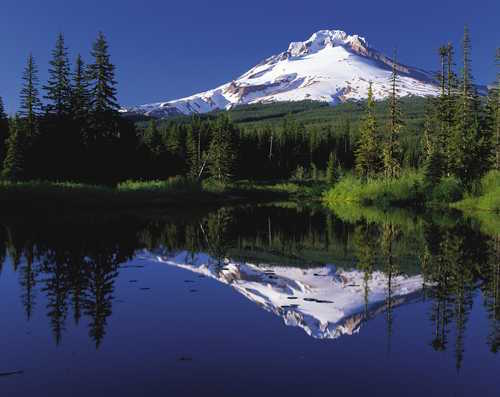Boundary Layer and Obstacle/Mountain Turbulence
Learning Goal 3f. Compare the characteristics and causes of
boundary-layer & obstacle/mountain-wake turbulence, and describe
their effects on aviation
Boundary-Layer Turbulence
Both clear-air buoyant updrafts/downdrafts and wind shear can create turbulence in the bottom 300 m to 4 km of the atmosphere. This layer of the atmosphere is called the atmospheric boundary layer (ABL) or the planetary boundary layer (PBL), and turbulence in this layer is called boundary-layer turbulence.

(z = altitude in this figure)
Boundary layer turbulence is often weak to moderate — not usually a
hazard to aircraft, but bumpy enough to make passengers airsick. Be
sure to have barf bags in your aircraft if you do a lot of flying in
the boundary layer.
ABL turbulence is often nonexistent, or sometimes
weak and sporadic, at night when winds are light. But during a sunny
day over land, the convective boundary layer starts as a very thin
layer near the ground, and gets thicker and stronger as the day
progresses as thermals of warm air rise from the ground.
These thermals often carry air pollutants upward (making them visible to laser radars call lidars, see orange colours in the figure below, where vertical axis is height above ground and the horizontal axis is time). These thermals cause the updrafts (with weaker downdrafts between them) that make the flight bumpy.
These daytime thermals are places where
sailplane pilots like to soar because of the lift. The thermals
are stronger, and rise to greater heights, in the mid to late
afternoon. Then near sunset,
turbulence often decays or becomes weaker, and the lift disappears for
sailplanes. But in the evening and early morning (when winds are
light and turbulence is weak) are ideal conditions for flying hot-air
balloons.
This lidar image is like a vertical slice through
the atmospheric boundary layer, where polluted air (green, yellow, and
red in this false color image) is being carried upward from the surface
by thermals of warm rising air. The diameter of these thermals
averages about 750 m in this example, but they can be larger when the
turbulent boundary layer is thicker.
For small obstacles such as buildings or trees, a moderate to strong wind hitting and flowing around these obstacles creates strong turbulence near and just downwind of the obstacle. As this turbulent air is blown downwind, the turbulence intensity weakens while the region of turbulent air increases slightly. Thus, on the downwind side of an obstacle is a long horizontal tail of turbulence with a diameter roughly equal to that of the size of the obstacle. Obstacle turbulence can affect flight, particularly when landing or taking off downwind of buildings, hangars, local hills and tall trees.
Obstacle-Wake Turbulence; also can form as Mountain-Wake
Turbulence
Larger obstacles such as mountains can create large regions of strong obstacle turbulence or mountain-wake turbulence downwind of them when the wind is strong and when air near the ground is relatively warm compared to air aloft (called statically neutral or statically unstable). This can affect your flight any time you are near or below the altitude of the mountain tops.
Aside:
One time I was flying in a small airplane south of Mt. Hood (a 3,429 m tall volcano in northern Oregon, USA). I was at an altitude just above the top of the boundary layer, so the ride was smooth (no turbulence) before I got near the mountain. But my altitude was below the top of Mt. Hood, and I was about 3 mountain-widths downwind from the mountain. The winds were from the north, so my flight track took me through the turbulent wake behind the mountain. But it was a clear VFR day, so there was no visible evidence of a turbulent wake.
I was surprised how quickly the turbulence increased when I flew into the wake. Turbulence intensity was moderate to severe, making the ride very unpleasant. But when I flew out of the other side of the mountain wake, the turbulence quickly diminished, and the remainder of my flight was smooth.
Key words:
atmospheric boundary layer, planetary boundary layer, boundary-layer
turbulence, mountain-wake turbulence
Image credits: All drawings were created by
Roland Stull. The public-domain photo of Mt. Hood is courtesy of
the US Dept. of Transportation.:
http://www.fhwa.dot.gov/byways/photos/62736. The lidar
photo is used with permission from Shane Mayor.


